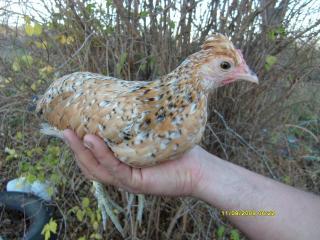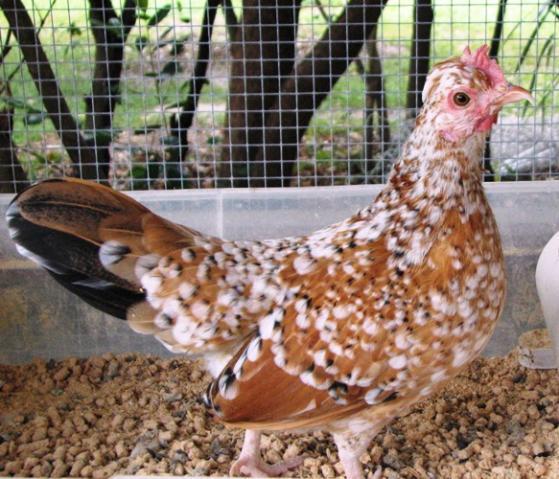These appear to me to be Polish Bantams (that is, the ones with the crests on their head) that are crossed with birds showing the Duckwing pattern (see the chipmunk colored ones? Those are usually Duckwing.)
Duckwing pattern isn't just unique to Phoenix or Ohiki; you see it in many other breeds, Old English Game Bantams, for instance.
Pyncheon are very small; the head tassel/crest is unique because it's really high and round compared to the Polish.
Also, check the nostrils at the top of the beak.
What's weird about Pyncheons are two characteristics: on your Polish, the nostrils are pronounced with a definite "stop" and are described as "cavernous".
To me, Polish always look like a bat's nostrils: if you look at a bat, head on, they have that flat nose with the inner nostrils kind of convoluted a little.
BUT---Pyncheons have a straight beak, and there are no raised nostrils.
Secondly, Pyncheons have two odd little puffy, downy knobs right in front of their eyes and the beak ---like little rounded horns---the first couple of days.
Lastly, the color.
The color they should be is closest to the bird on the bottom right of your second photo, but that one is missing the grey back.
The chicks should be brown on the head on sides, greyish all down the back.
They should look exactly like a baby Mille Fleur D'Uccle (without the feathered feet or the beard/muffs around the face) or a baby D'Anvers (without the beard/muffs on face).
That being said, there is no reason (other than the present standard of perfection on Pyncheons) that, in the future, breeders might experiment and produce new patterns on this distinguished old breed.
Since the carry Mille Fleur pattern, it is not unusual at all that there are also Porcelains in the breed (someone on here has photos) since they are a dilute of Mille Fleur.
Following that line of reasoning, you can achieve Goldneck ( another dilution, of the Red Pyle variety.
I already have some of these colors, and Mottled as well---in the Pyncheon breed.)
I think they are quite fetching, although not recognized as showable.
This gives me a little extra genetic variability to work with, since, as I have previously mentioned, the genetics of the Pyncheon at this point are horribly bottle-necked.
But the only recognized is the Mille Fleur pattern for show, as far as I know.
I could be wrong, because I have been using my old 1975 Bantam Standard.).
I just ordered the newest standard to check out what changes have been made, since I may be a bit behind the times in respect to accepted color.
I saw some very nice Porcelains somewhere on this backyard chicken site, so Porcelain may be recognized as well.
You've got some very pretty chicks there; and if you end up with some Polish Duckwings or other new colors, you could start a new trend!!
Duckwing is a gorgeous pattern, and I have yet it see it on a Polish, bantam or large fowl. It would be nice if you would update photos as the mature.
Best Regards,
Dovemaiden







